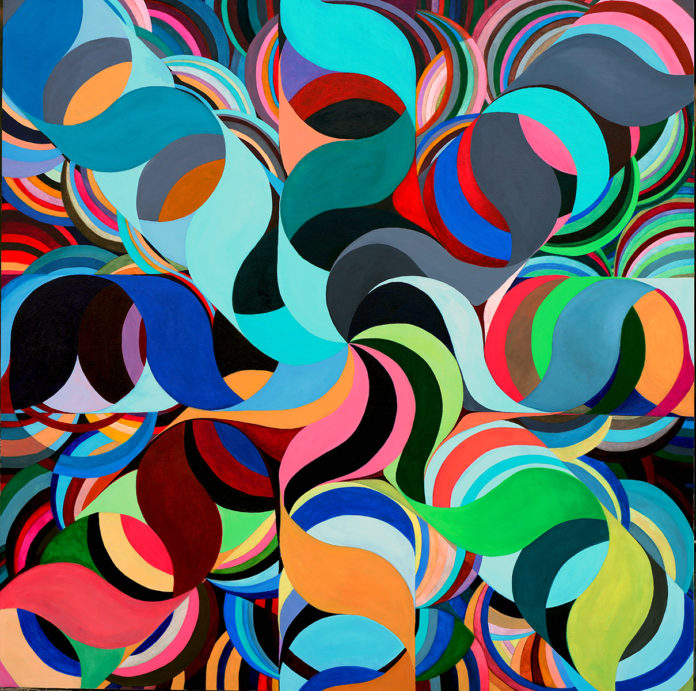LORIEN SUAREZ. COALESCING GEOMETRIES.
By Milagros Bello, Ph.D.
Lorien Suarez creates complex webs of hand-made fractalized patterns. She proposes geometric figures in never-ending configurations of infinite iterations. At different scales, and through different “fractured” recurring schemes, the geometric forms progressively augment and multiply in expansive dimensions. Vortexes and vibrant fluids, both tactile and aerial, operate in recursive constructions. Depths, ratios, proportions, scales, and ranges in strong colored stances emerge as relational points of departure. They mimic the cosmic world in imaginary projections of conversing energy waves, multiplying crystals, galactic systems, molecular interfaces, and collisions of particles as forceful form/type model generators.
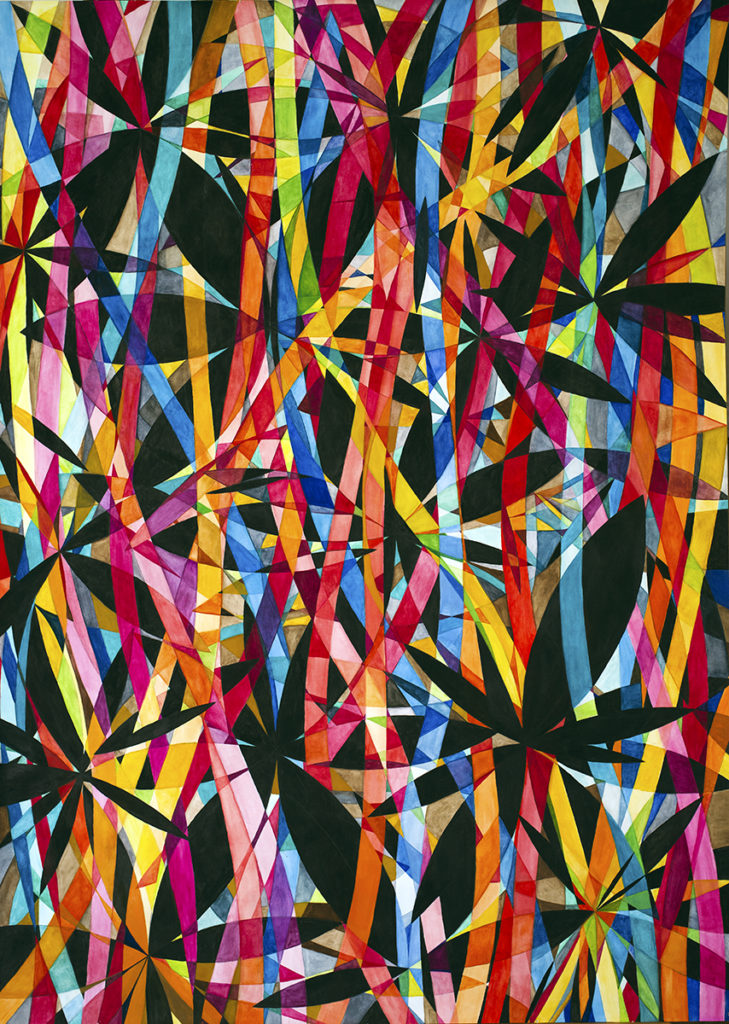
The intricate visual result signals the artist’s insight and awareness that plainly reveal her force and strong being. In her retrospective, Coalescing Geometries, she affirms, “Creating art is in essence a practice of being attentive and focused in the present moment. Creative insights come to light. Over time, intuitive spiritual expressiveness grows.” The work comes from a vigorous creativity and a resourceful inventiveness that doesn’t need the use of any computer software mediation. It’s Suarez’s artistic hand over canvas or paper, the painter’s sole imprint, which sets the conception of this ingenious imagery.
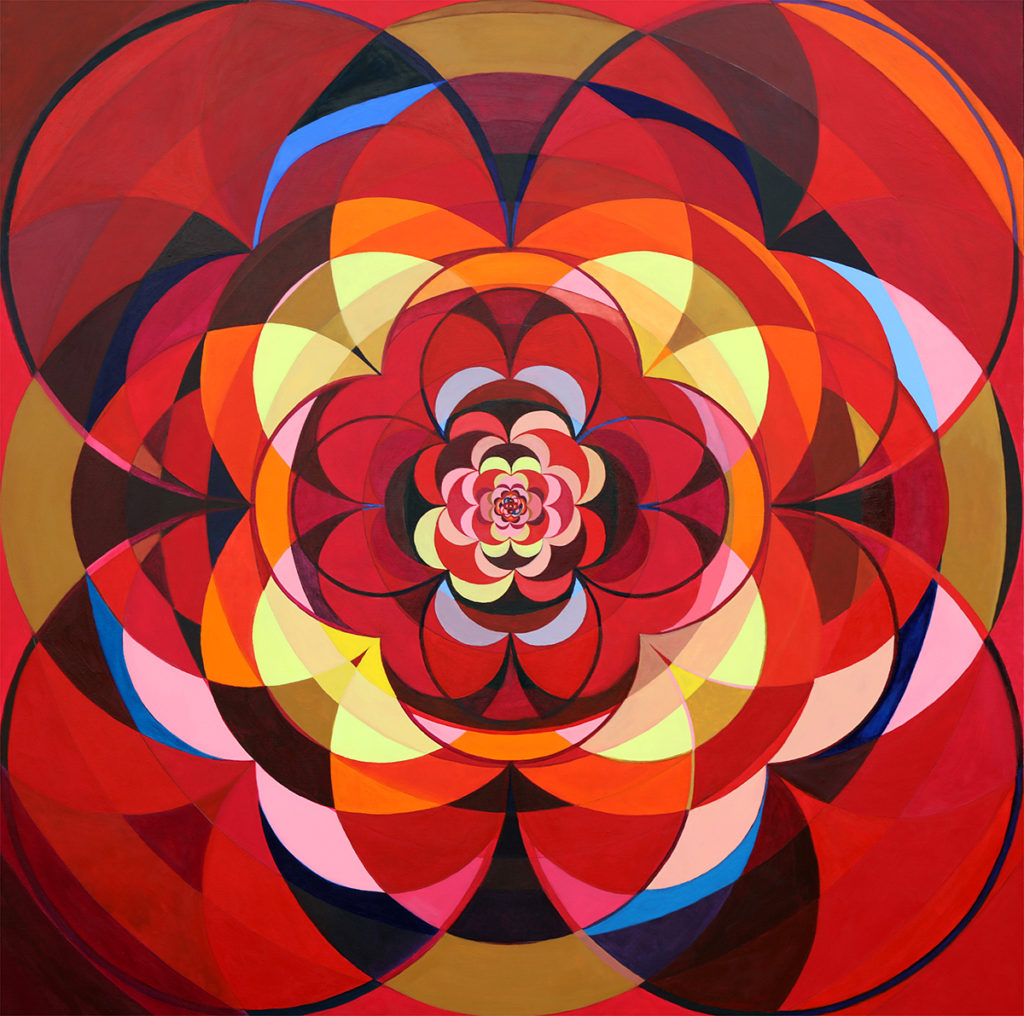
Endorsing her artistic identity, Suarez asserts: “Art to me is a form of knowledge of the heart. Creative practice brings forth discoveries that outlive their creators, serve the evolution of meaningful understanding, and give birth to a more profound vision of the unfolding of life.”
In a further step, the artist goes beyond the complexity of her geometrical creations. Their self- generated turns and expansions also correlate to jewel-like geometric shapes, such as it is in the “amplituhedron”, a geometric object that challenges notions of space and time in quantum physics (Wolchover, Natalie. A Jewel at the Heart of Quantum Physics. Quanta Magazine). This refers to a jewel-like multifaceted master geometry that was conceived by physicists Nima Arkani-Hamed (a professor of physics at the Institute for Advanced Study in Princeton, N.J.) and Jaroslav Trnka (a post-doctoral researcher at the California Institute of Technology) to project quantum particles’ multidimensional trajectories in the subatomic world. Departing from this parameter, the artist traces comprehensive structures that build up together in many facets and volumes, in a rich interplay of kinematic conglomerates (Wolchover, Natalie). She creates “transposed geometries”, altered and swapped, rearranged in sparkled diagrams, in fizzed organizations, in an open system of space, time, and movement.
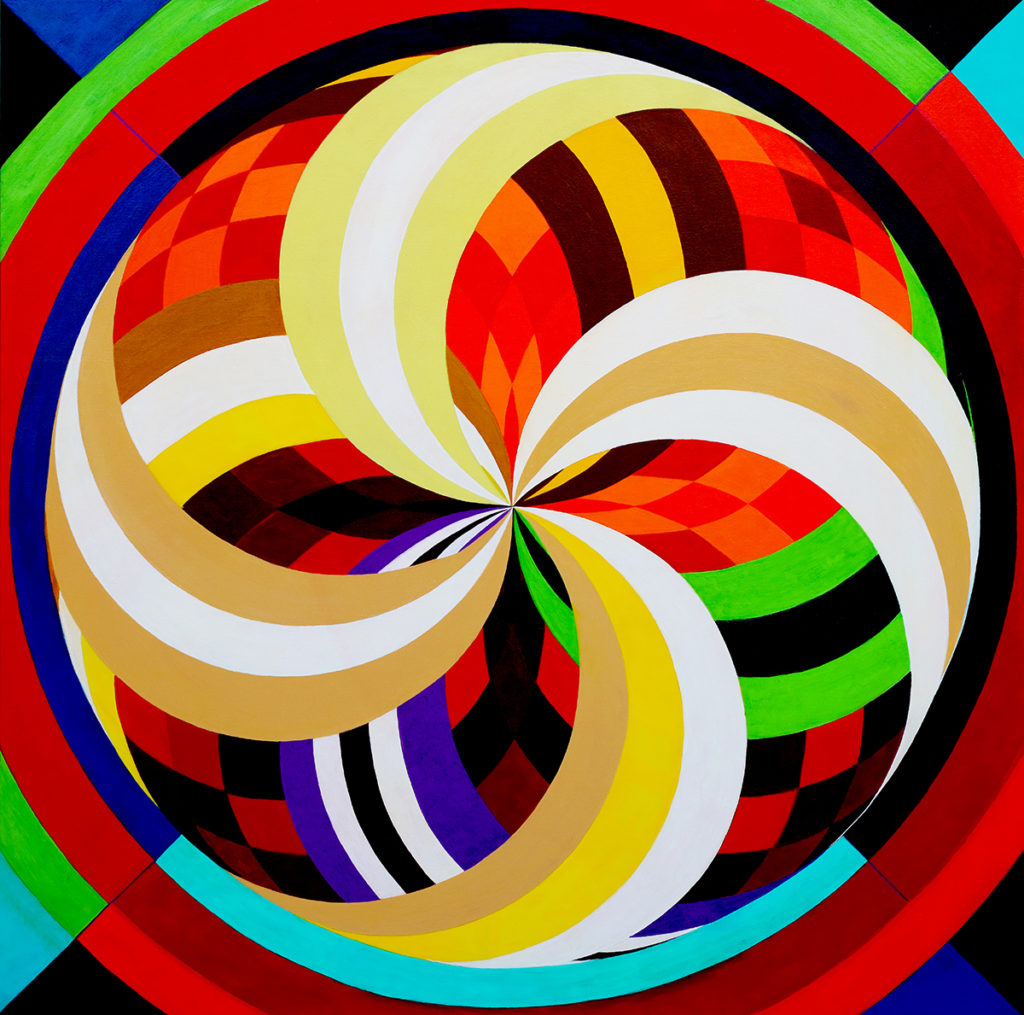
At first, and attuned with the Mandelbrot model, the artist’s work establishes schemes of visual chaos and order, producing multiple organizations in orderly generators and extensive, shaped iterations. Continuous and self-mirrored structures expand or contract in a decentered visual composition. Euclidian “fractalized” and multihued circles, rectangles, and squares, subdivide in vibrant assemblies of variable densities. (Taylor, Richard. Fractal Expressionism. Where Art Meets Science.)
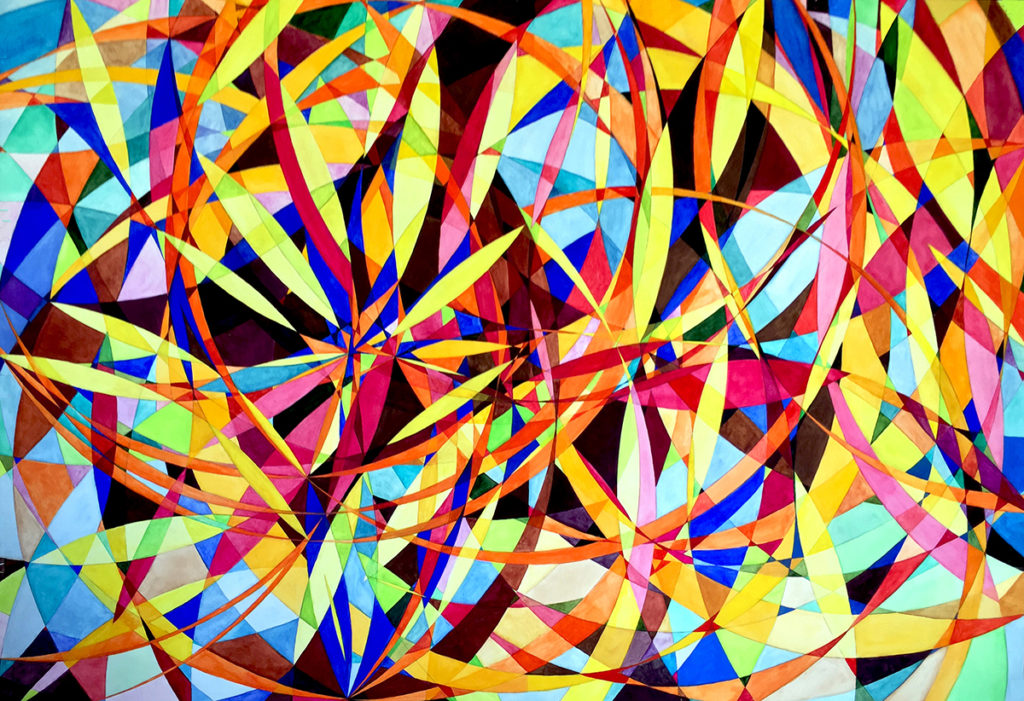
The visual morphologies of hard-edge outlines superimpose or revolve one into other in mathematical calculations. The works conform a vision of the universe in its meticulous micro and macro optic constructs. The viewer changes perspective from the rational vertical/horizontal paradigm to a sprawling kinetic perception projecting invisible domains in which materiality dissolves towards intangibility and immanence.
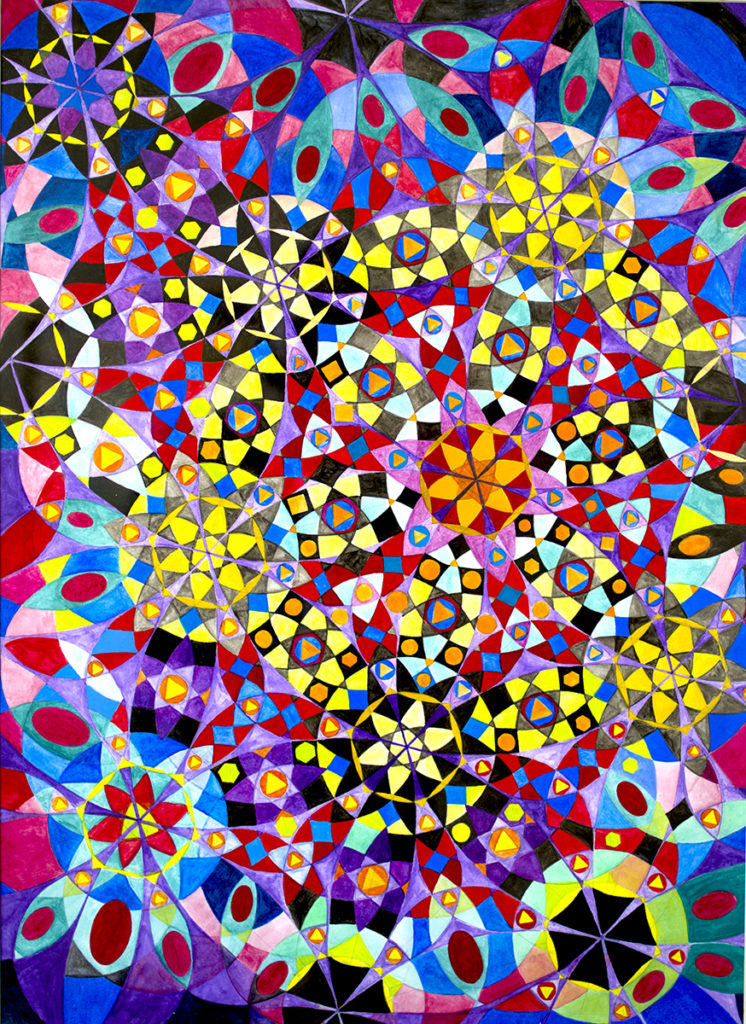
The work merges two essential elements of visual plasticity appropriated from modernist aesthetics, a potent graphic line of defined contours that strongly delineate and give character to forms, and a chart of colors that desegregate and disseminate into rich tone values and hues. It is at once both a graphic and a painterly approach, reinforcing the “autonomy of means” of the pieces in which the image possesses a “self-sufficient autonomy” (Wolchover, Natalie). The rhythmic lines entwined with luxuriant hues consolidate a compelling visual execution in which any reference to the real is unnecessary.
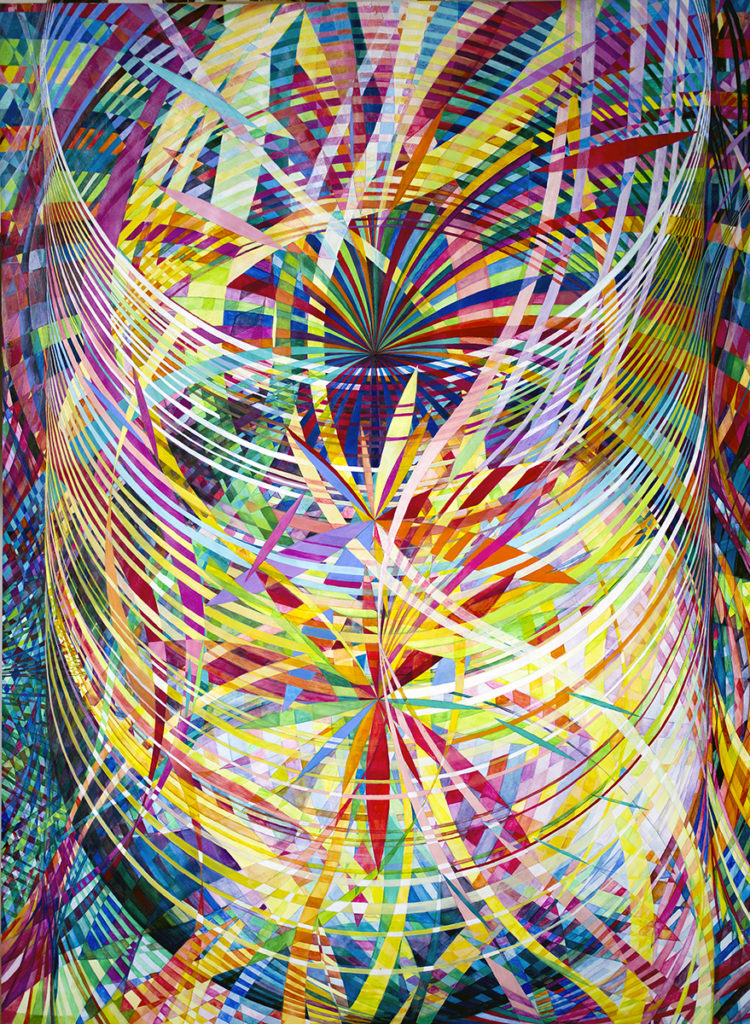
“Wheel Within A Wheel 16,” one of Suarez’s seminal works from 2003, displays a visual chaos/order of a crystal configuration. Fractal colored forms repeat in augmenting boosting patterns, virally interweaving and magnifying. Numerous geometrical subsidiaries, triangles, circles, and convex polygons proliferate in a lavish arrangement of the aerial composition. Governing circles, positioned in tensional asymmetrical locations, emerge as dominant form generators. The flowery and elaborate crystal forms spread widely in the hinted space producing powerful optical effects.
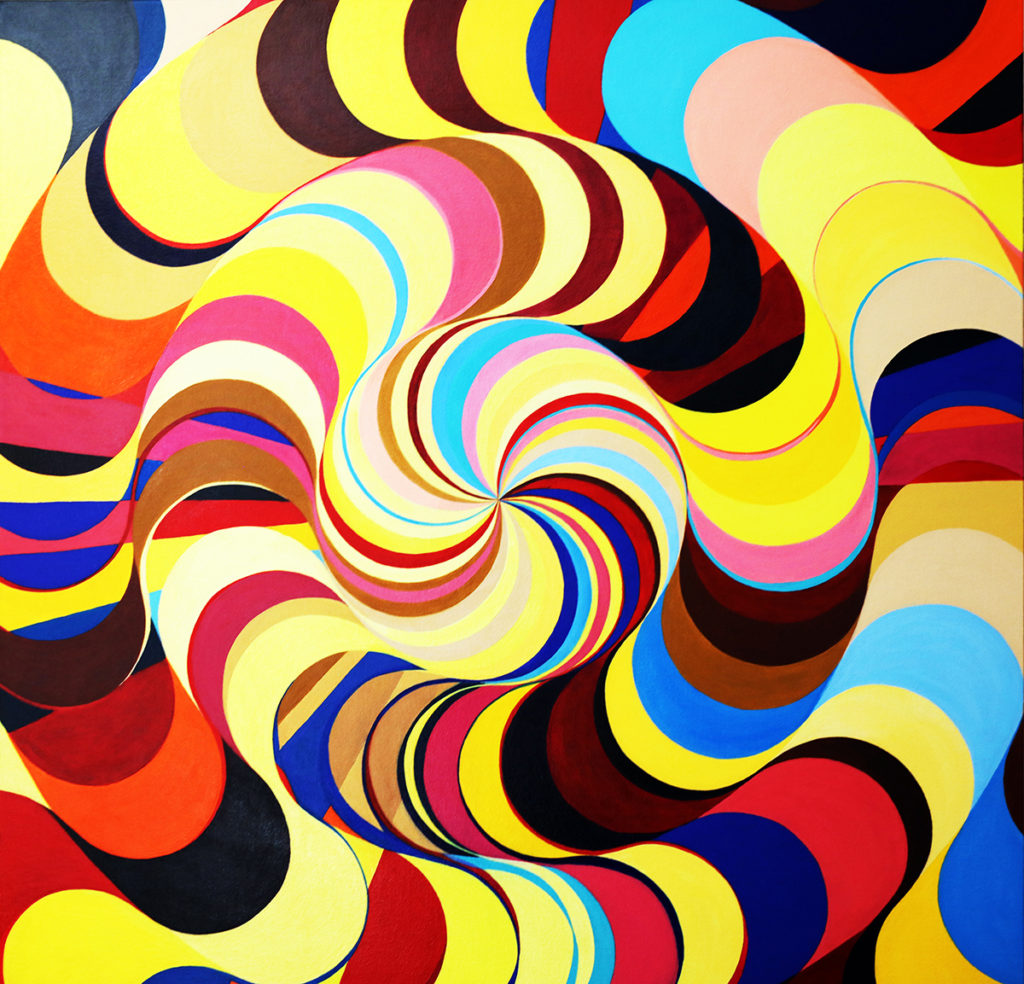
The work “Wheel Within A Wheel 50,” shows a huge spinning spiral rotating ad infinitum in a scattering process. It is a complex formulation of multiple interactions and frequencies, showing high-amplitude dimensions that refer to a 3-D quantum graph of moving particles. It is a visual platform for an all-encompassing inward/outward continuum of space-time. At the center of the spiral, there are three core generators, three epicenters of expanding energy, that radially project crisp trajectories, fracturing the planes inside-out and vice versa. The interlacing of colors enhances the kinetic effects, into a hyper recursive panorama of the universe.
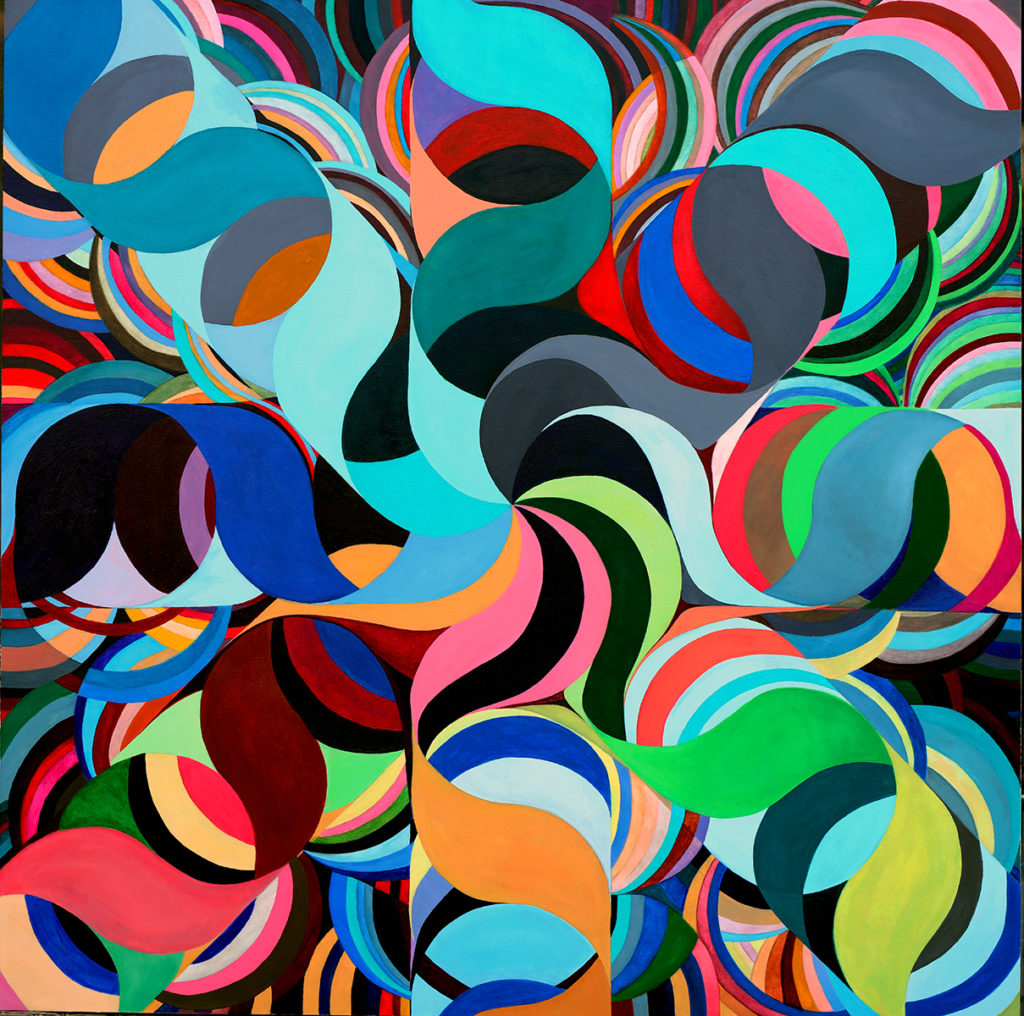
The painting “Wheel Within A Wheel 114,” stands as one of the most important canvases in the artist’s production. In it, there is a deep immersion into pure pictorialism, and a major emphasis on volume, paint and mass. Expressive layers of glutinous tint appear in fractioned compounds. A bulky snake-like geometry retorts and spirals inside-out in figure/ground illusionistic effects. The negative space disappears into the physical body of the colossal curly geometry. The multihued fragments succeed one another, continuously dissolving into endless torsions as in a sequel of an Escher-like tessellation design.
In summary, the artist names the unnamable and visually articulates the invisible routes of the metaphysics of the cosmos.
*Dr Milagros Bello’s critical essay “Transposed Geometries” was first published in “Coalescing Geometries” (2019 International Latino Book Award – First Place “Mariposa” 1st Non-Fiction book and Second Place in the Artbook categories). The book features Suarez’s “Wheel within a Wheel” abstract geometric paintings, the artist’s reflections, and critical essays by Peter Frank, Terrence Sanders, John Mendelsohn, Britni Winkler Winkler, and Evan Senn. Published by Art Voices Books and distributed worldwide, including Amazon and Barnes and Noble. Curator Dr Milagros Bello holds a PhD in Sociology with a doctoral thesis in Sociology of Art from Sorbonne University (Paris VII-Jussieu), Paris, France. Dr Bello is an art critic member of the International Association of Art Critics (AICA). Dr Bello has curated numerous shows in contemporary art locally and nationally; she is an art writer for local and international art magazines and a former Senior Editor of Arte Al Dia International art magazine. Since 2000, Bello has taught as a professor of art and critical theories at the Florida International University, Florida Atlantic University, Miami International University (The Art Institute/Miami), and the Istituto Marangoni/Miami. From 2010-2020, she was the director and chief curator of Curator’s Voice Art Projects in Miami, Florida/USA, which pivoted to the new MIA Curatorial Projects due to the pandemic.
Art Voices Art Books:
https://artvoicesbooks.com/#/lorien-suarezkanerva/
Amazon:
https://www.amazon.com/Coalescing-Geometries-Lorien-Su%C3%A1rez-
Kanerva/dp/1732004838
Barnes & Noble:
https://www.barnesandnoble.com/w/lorien-suarez-kanerva-coalescing-geometries-lorien-suarez-
kanerva/1141459253


